MEMORABILIA ROOM
Florida Keys Bottles Shelf
Page 1
These pages are by Jerry Wilkinson
- prologue -
This
presentation
is not presented to encourage bottle collecting, but to encourage
recognition
of how our present and past lives influence industry and vice versa.
The origins of man-made glass
seems lost
in the mists of time. In 1500 BC the orgin of glass was
securely
dated by an Egyptian mosaic rod now located in the Berlin Museum.
The Syrians (250 - 100 BC) are credited with the invention of glass
blowing.
The Roman historian, Pliny, wrote in 77 AD that Phoenician sailors
accidentally
melted silica sand into glass while cooking a meal. In North America
Dutch
and Polish glass blowers made the first attempt at glass production in
1621. Caspar Wistar successfully ran "South Jersey Glass" from 1730 to
1780, including the production of bottles. Henry Stiegel followed
and in 1827 the Sandwich Glass Co. produced large quantities of glass
products.
The following bottles were found
in the
Florida Keys. The Keys have a natural sieve or net - the webbing of
mangrove
roots which collect bottles and other debris. To my knowledge, no
bottles were ever made in the Keys except for a short time at Big Pine
Key by the "Big Pine Key Glass Works." However, the 1911 - 1912 Key
West City
Directory lists "Consumers Bottling Company." As with most bottling
companies,
the bottles were made by a bottle manufacturer.
Glass Colors of Bottles
(Note: single click on all images to enlarge, then BACK to return.)
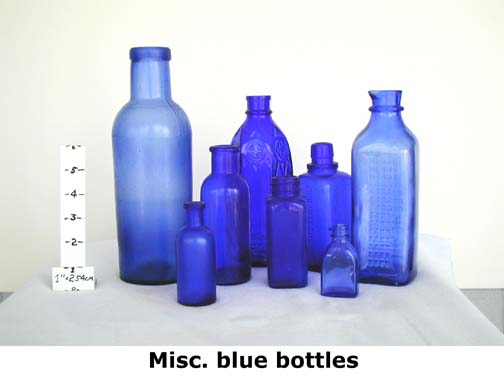
Many impurities can be added to the molten glass to produce
different
appearances. Cobalt is generally used to produce brilliant blues.
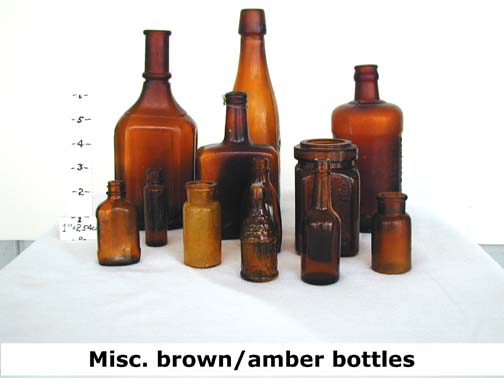
Some form of carbon is generally used to produce the common
brown.
Chromium, sulfur and silver produces yellow. Combinations can produce
ambers.
Many ambers are due to the supply of the clarifier maganese being cut
off
from Germany from about 1914 to 1930.
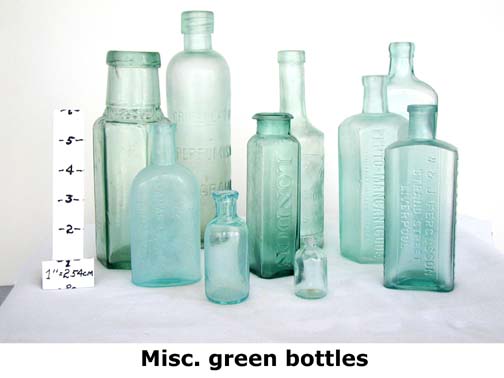
The environment, especially sunlight and moisture, will
"weather"
the impurities in once clear glass to various colors. Various
iridescence,
cloudy, milky, etc. opaqueness also occurs primarily because of the
reaction
of the soda content with moisture and sunlight (or the absence
thereof).
Copper impurities will create an emerald green.
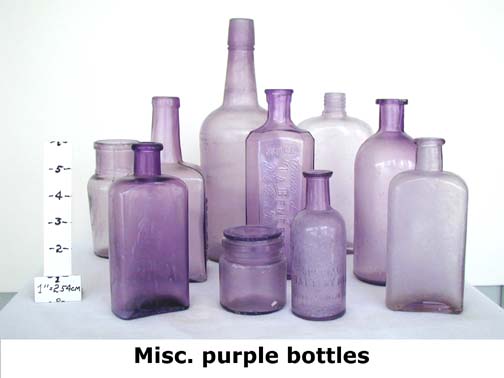
Also called "sun glass" or "desert glass", the amethyst to
purple
coloring is caused by the effect of ultra-violet rays on the maganese
content.
Large amounts of manganese was used as a clarifier (decolorizer)
between about 1880 to 1915.
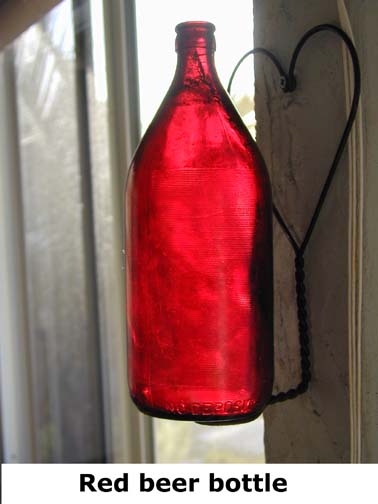
Red is unusual for bottles as its impurity is gold oxide.
Continued on Page 2
Go to Page 2
Return to Cultural Museum
|